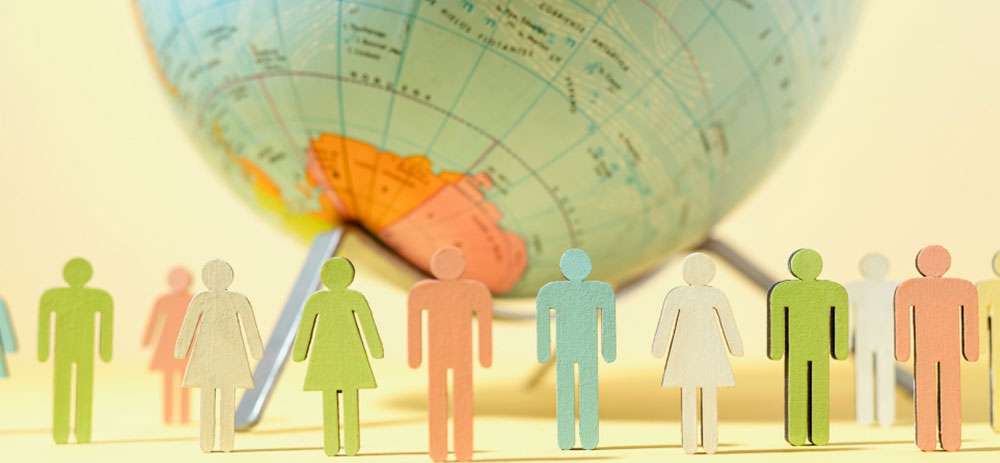Introduction
World Population Day, observed annually on July 11, is a global initiative aimed at raising awareness about population-related issues, including sustainability, family planning, gender equality, poverty, and human rights. Established by the United Nations Development Programme (UNDP) in 1989, this day serves as a reminder of the impact of population growth on economic and social development.
With the global population surpassing 8 billion, it is more crucial than ever to address the challenges and opportunities that come with this rapid growth. From environmental concerns to resource distribution and healthcare access, population trends significantly influence global stability and progress.
The Importance of World Population Day
The purpose of World Population Day is to highlight pressing population issues and encourage governments, organizations, and individuals to take action. As the world population grows, the demand for food, water, healthcare, and education increases, putting immense pressure on global resources. This day serves as a call to promote sustainable development, improve healthcare systems, and enhance economic opportunities for all.
Key Themes of World Population Day
Each year, World Population Day focuses on a particular theme addressing contemporary challenges and solutions. Some recurring themes include:
- Family Planning & Reproductive Health: Ensuring access to contraception and reproductive healthcare.
- Gender Equality & Women’s Rights: Empowering women through education and healthcare.
- Sustainability & Climate Change: Managing natural resources responsibly.
- Youth Empowerment: Providing better education and job opportunities.
- Urbanization & Migration: Addressing the challenges of overpopulation in cities.
Global Challenges Posed by Population Growth
- Overpopulation and Resource Scarcity
The world is witnessing an unprecedented rise in population, leading to scarcity of essential resources such as water, food, and energy. Rapid urbanization has put extreme pressure on infrastructure, causing shortages in housing, transportation, and healthcare.
🌍 Fact: The global population is expected to reach 9.7 billion by 2050, further straining natural resources.
- Environmental Degradation
Increased population leads to deforestation, pollution, and climate change. As more land is cleared for agriculture and settlements, biodiversity is threatened, contributing to global warming and extreme weather conditions.
🔥 Example: Large-scale deforestation in the Amazon rainforest to accommodate growing human settlements and agricultural needs.
- Economic Disparities and Unemployment
Countries with high population growth often struggle with poverty and unemployment. Limited job opportunities and inadequate wages can result in economic instability and social unrest.
💡 Solution: Investing in education and skill development can help create a more employable workforce and reduce economic inequalities.
- Healthcare Challenges
A rising population increases the burden on healthcare systems, making it difficult to provide quality medical services. Issues such asmaternal mortality, child malnutrition, and lack of vaccination programs become more prevalent in densely populated regions.
🏥 Example: Developing nations often face shortages of doctors, hospitals, and essential medicines, leading to higher disease rates and lower life expectancy.
- Climate Change and Sustainability Issues
A growing population demands more energy, transportation, and industrial production, contributing to greenhouse gas emissions. As consumption rises, so does environmental degradation, makingsustainable development a necessity.
🌱 Sustainable Solutions:
- Promoting renewable energy sources (solar, wind, hydro).
- Implementing green technologies in industries.
- Encouraging eco-friendly practices like waste management and conservation.
Opportunities Created by Population Growth
While population growth presents challenges, it also opens up opportunities for economic progress, innovation, and social development.
- A Growing Workforce
A larger population means a bigger workforce, which can drive economic growth and innovation. Countries witha young and educated population have the potential to boost their economies through entrepreneurship and technological advancements.
📈 Example: India has one of the world’s largest youth populations, providing opportunities for economic expansion and technological progress.
- Technological and Medical Advancements
Population growth pushes researchers and scientists to develop new technologies and medical breakthroughs. From renewable energy solutions toadvanced healthcare systems, innovation plays a key role in managing population-related challenges.
🔬 Example: AI-driven healthcare systems are improving disease diagnosis and treatment accessibility in remote areas.
- Increased Demand for Education and Infrastructure
More people mean a greater demand for schools, universities, roads, and public transportation. Governments and private sectors can invest in these areas, leading toimproved infrastructure and economic growth.
🏫 Key Strategy: Expanding digital education platforms to provide accessible learning opportunities for all.
- Urban Development and Smart Cities
With urbanization on the rise, countries are focusing on developing smart cities that use technology for efficient transportation, energy use, and governance. These cities aim to create asustainable and high-quality living environment.
🏙️ Example: Singapore’s Smart Nation initiative integrates technology to improve urban living standards.
Solutions to Manage Population Growth Effectively
Governments, organizations, and individuals must work together to ensure sustainable development and improve the quality of life for all. Here are some key solutions:
- Promoting Family Planning and Reproductive Health
- Educating communities about contraceptive methods.
- Providing affordable and accessible reproductive healthcare services.
- Empowering women with decision-making rights regarding family planning.
- Sustainable Resource Management
- Encouraging water conservation and efficient agricultural practices.
- Investing in renewable energy sources to reduce dependency on fossil fuels.
- Implementing recycling programs and reducing waste generation.
- Enhancing Education and Employment Opportunities
- Providing quality education and skill development programs.
- Encouraging entrepreneurship and innovation.
- Supporting policies that promote fair wages and job security.
- Strengthening Healthcare Systems
- Expanding healthcare infrastructure, especially in rural areas.
- Improving maternal and child healthcare services.
- Enhancing vaccination programs to prevent disease outbreaks.
- Adopting Technological Solutions
- Using AI and big data for population management and planning.
- Implementing smart city initiatives to enhance urban living.
- Encouraging sustainable business models that reduce environmental impact.
Conclusion
World Population Day serves as a crucial reminder that population growth brings both challenges and opportunities. While resource scarcity, climate change, and economic disparities pose concerns, a well-managed and educated population can drive economic growth, innovation, and sustainable development.
To create a balanced and sustainable future, governments, policymakers, and individuals must work together to address population-related issues while ensuring equal opportunities for all. By focusing on education, healthcare, family planning, and technological advancements, we can shape a better world for future generations.
🌍 Let’s celebrate World Population Day by taking action toward a more sustainable and inclusive future! 💙



